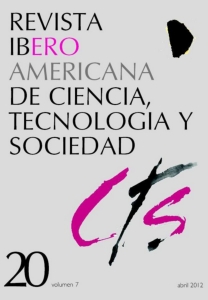What we know and what we do not know
from common knowledge to the comprehension of technoscience
DOI:
https://doi.org/10.52712/issn.1850-0013-688Keywords:
social diffusion of technoscience, construction of meaningful knowledge, formal education, social evaluation of technoscienceAbstract
The social diffusion of science and technology is a recurring topic in both education policy and science forums. It is also a crucial topic in forums discussing governance of science and in debates on ethics and science. Numerous documents covering this topic find assertions on the need to diffuse scientific and technical knowledge, promote literacy in these areas and update the formal education curricula, but they do not provide an analysis of the cognitive components that make it possible for the proposed actions to generate the desired results: the comprehension of new theories and the technological achievements that are derived from them and make up the current state of science. Frequently omitted is also the need of promoting and updating knowledge processes, in order to operate in broad social contexts and achieve a public capable of evaluating the social desirability of all those technologies that are being incorporated into daily life, such as nanotechnology. This work reflects upon both aspects and searches for the keys to promote training, update and diffusion of techno-scientific knowledge to society.
Downloads
References
BLONDER, R. (2011): “The Story of Nanomaterials in Modern Technology: An Advanced Course for Chemistry Teachers”, Journal of Chemical Education, vol. 88 nº 1, pp. 49-52
BRUNER, J. (1991): Actos de significado. Más allá de la revolución cognitive,Madrid, Alianza Editorial.
DE MELO, I. (2003): “Clonar o no clonar seres humanos: he ahí el dilema”, Revista Iberoamericana de Ciencia, Tecnología, Sociedad e Innovación,nº 5.
DEWEY, J. (2007): Cómo pensamos, Barcelona, Paidós.
EUROPEAN COMMISSION - EUR 24055 COMMUNICATION PLAN ON NANOTECHNOLOGIES (2010): Communicating Nanotechnology. Why, to whom, saying waht and how?, Luxenburgo, Publication Office of the European Union, en cordis.europa.eu/nanotechnology/src/publication_events.htm, consultado el 1º de marzo de 2012.
GROVES, C., FRATER, L., LEE, R. y STOKES, E. (2011): “Is There Room at the Bottom for CSR? Corporate Social Responsibility and Nanotechnology in the UK” Journal of Business Ethics, nº 101, pp. 525-552.
JADAD, A. y LORCA, J. (2007): “Innovación no es lo mismo que novedad”, Andalucía Investiga,nº 38.
SIMON, H. y NEWELL, A. (1958): “Heuristic Problem Solving: The Next Advance in OperationsResearch”, Operations Research.vol. 6, nº 1, pp 1-10.
ZIMAN, J. (1985): Enseñanza y aprendizaje sobre la ciencia y la sociedad,México D.F., Fondo de Cultura Económica.
Downloads
Published
How to Cite
Issue
Section
License
Copyright (c) 2024 CC Attribution 4.0

This work is licensed under a Creative Commons Attribution 4.0 International License.
All CTS's issues and academic articles are under a CC-BY license.
Since 2007, CTS has provided open and free access to all its contents, including the complete archive of its quarterly edition and the different products presented in its electronic platform. This decision is based on the belief that offering free access to published materials helps to build a greater and better exchange of knowledge.
In turn, for the quarterly edition, CTS allows institutional and thematic repositories, as well as personal web pages, to self-archive articles in their post-print or editorial version, immediately after the publication of the final version of each issue and under the condition that a link to the original source will be incorporated into the self-archive.











